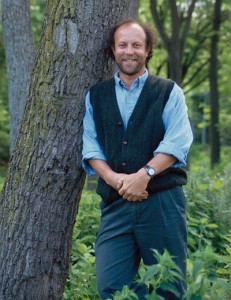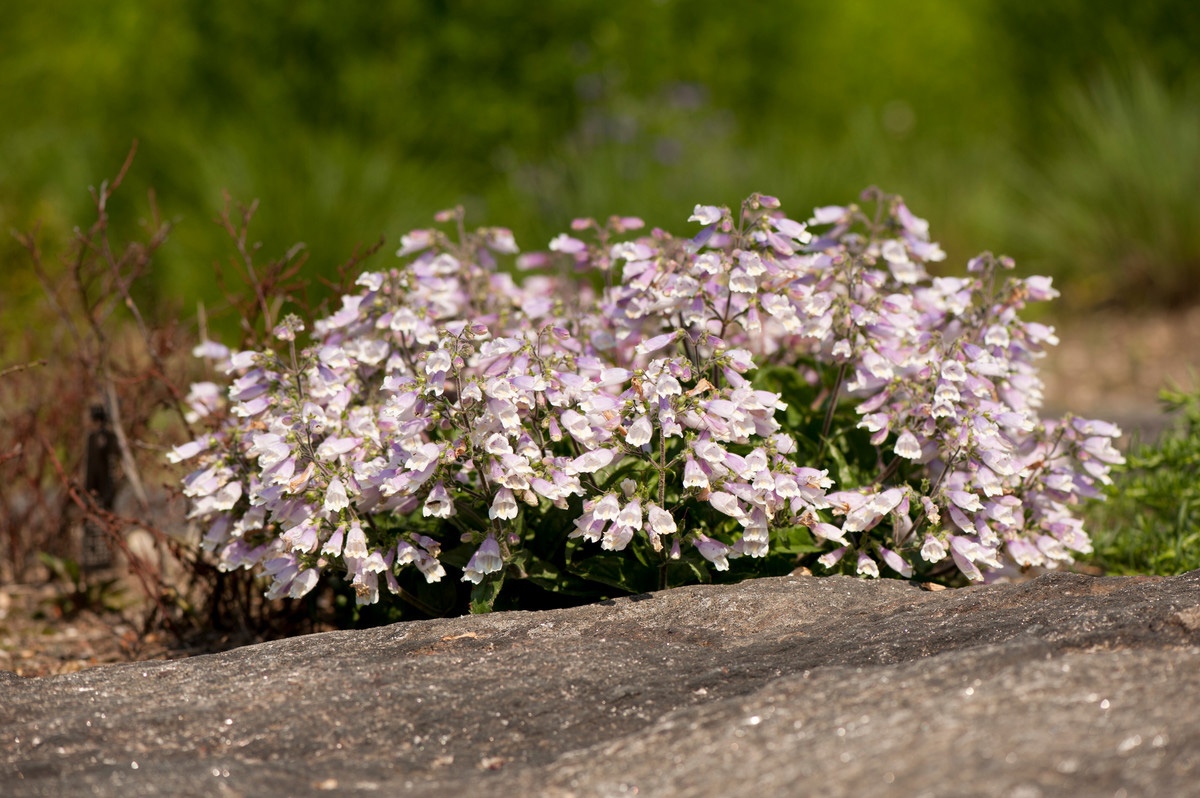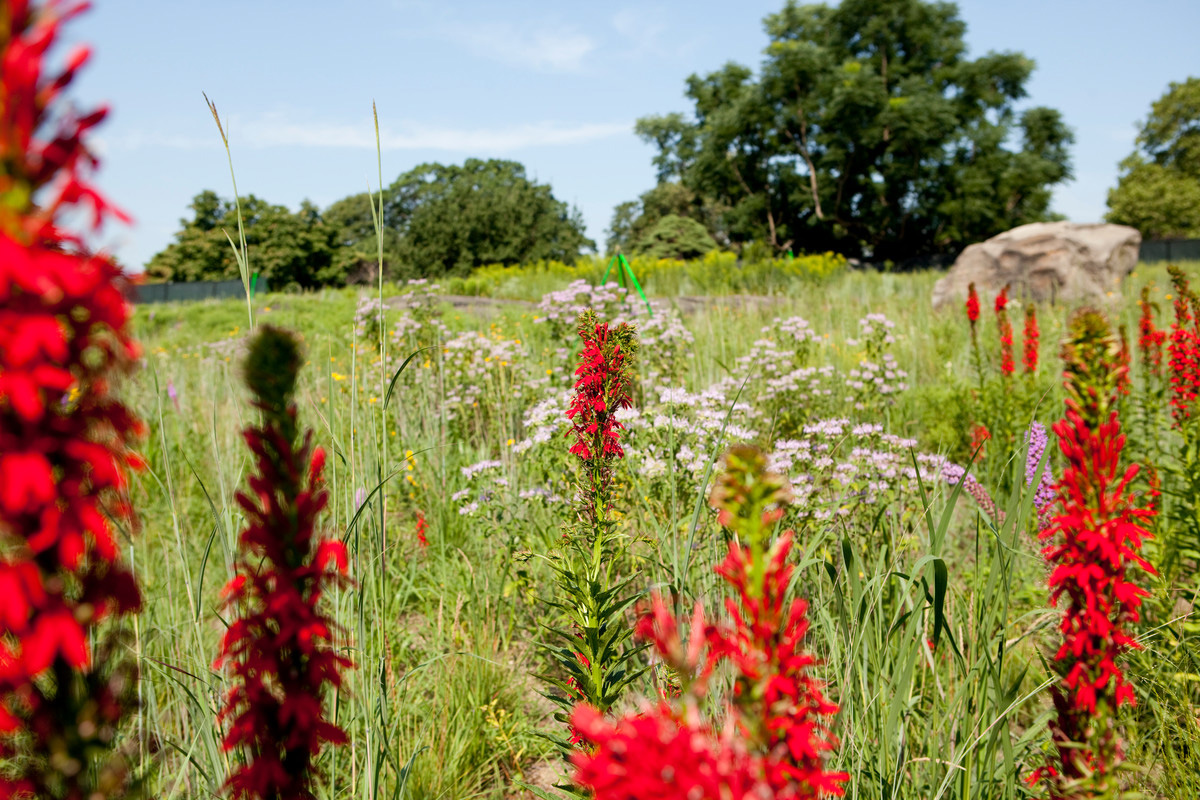Celebrating Native Plants: Profile of Larry Weaner
Posted in Horticulture on February 18 2015, by Sonia Uyterhoeven
Sonia Uyterhoeven is NYBG‘s Gardener for Public Education.
 I recently attended a lecture at NYBG given by the naturalistic landscape designer and meadow aficionado, Larry Weaner, who chose an unusual and interesting topic to cover: “Assisted Plant Proliferation in the Designed Landscape.” He based his lecture on the premise that if you do nothing, things grow. The challenge for gardeners is to get the right things to grow. In this respect, Weaner, through his work on large-scale naturalistic landscapes, is highly inventive and astutely attuned to the workings of nature.
I recently attended a lecture at NYBG given by the naturalistic landscape designer and meadow aficionado, Larry Weaner, who chose an unusual and interesting topic to cover: “Assisted Plant Proliferation in the Designed Landscape.” He based his lecture on the premise that if you do nothing, things grow. The challenge for gardeners is to get the right things to grow. In this respect, Weaner, through his work on large-scale naturalistic landscapes, is highly inventive and astutely attuned to the workings of nature.
On some of his project sites, he encourages volunteerism by leaving sections of the meadow fallow for a year to see what makes its way into the wild patch. If the new recruit is desirable, he flags the seedling. Otherwise, it gets mowed down the following year along with the rest of the meadow. Weaner showed an image of a healthy elderberry that had found its way to a fallow section at the edge of a meadow. Sometimes, some of the healthiest and most robust garden specimens appear in this manner, starting surreptitiously from seed and being allowed to flourish.
My note-taking was fast and furious as Weaner went through a number of case studies of plants in their natural habitat. He spoke of the importance of knowing where and how plants proliferate in nature. With this knowledge in hand, gardeners will be able to replicate the desired results.
He spoke of the stunning wild lupine (Lupinus perennis) that thrives on barren, sandy banks, where it avoids competition from other plants. This member of the pea family is able to add nutrients to the soil by fixing nitrogen. The hairy beardtongue (Penstemon hirsutus) adopts a similar strategy on dry ledges, where the small beardtongue proliferates in a thin layer of soil that is so meager its competition is unable to establish a foothold.

Other plants that he highlighted were early successional species that come in quickly in response to a disturbance and are gone just as fast. One beloved example is the cardinal flower (Lobelia cardinalis). This hummingbird magnet happily colonizes the edge of damp stream banks when trees fall, taking advantage of the sunlight that comes through the newly opened space in the canopy.

Weaner then embarked on a profound discussion of the best possible uses of limited resources in maintaining wild landscapes. His years of professional experience in the field were apparent and few are as informed as he is when it comes to habitat restoration and management. One easy rule to follow with regard to eradicating invasive plants from natural habitats is to start early. If you see autumn olive (Elaeagnus umbellata) or multiflora rose (Rosa multiflora) creeping into a meadow, take the time to remove it before it proliferates and becomes unmanageable.
Weaner’s favorite method for tackling invasive plants is the mower. He advocates mowing infested areas several times a year to prevent the formation of seed and reduce the plant’s vigor. Desirable species can always be flagged so they avoid the fate of their invasive competitors.
Weaner recommends that, when tackling an area, you select a location that has the lowest percentage of invasive plants and the highest number of natives. As you remove undesirables, make sure you add native replacements to ensure the area won’t remain open for re-infestation.
While working on an area, continuously expand outwards to create a three-tiered space with rehabilitated zones, a remediation area, and the outlying invasive zone. If your work area is constantly growing from a definable point, you will be fueled by your successes rather than overwhelmed with failure. On paper, this sounds good; on site, this practice is essential.
Weaner also spoke about working with natural ecosystems and he gave an example of a coastal plain that he had stumbled upon in New Jersey, containing bayberry, red cedar, sweet gum, and oaks. He saw signs that sweet gum (Liquidambar styraciflua) seedlings had been introduced into the landscape by someone. His comment was that the sweet gum would have come in on its own and done well without human aid. Sour gum (Nyssa sylvatica), on the other hand, was also an appropriate species for that habitat—one that is less common and could have used help to establish.
In the end, Weaner provided his audience with a multitude of strategies for working effectively with nature on both a small and large scale. I eagerly await the publication of his forthcoming book, although he mentioned that it may be up to a year before we see it on the shelves. After attending his lecture, I am confident that it will be worth the wait and a valuable addition to any gardener’s library.
Photo courtesy of Larry Weaner.

